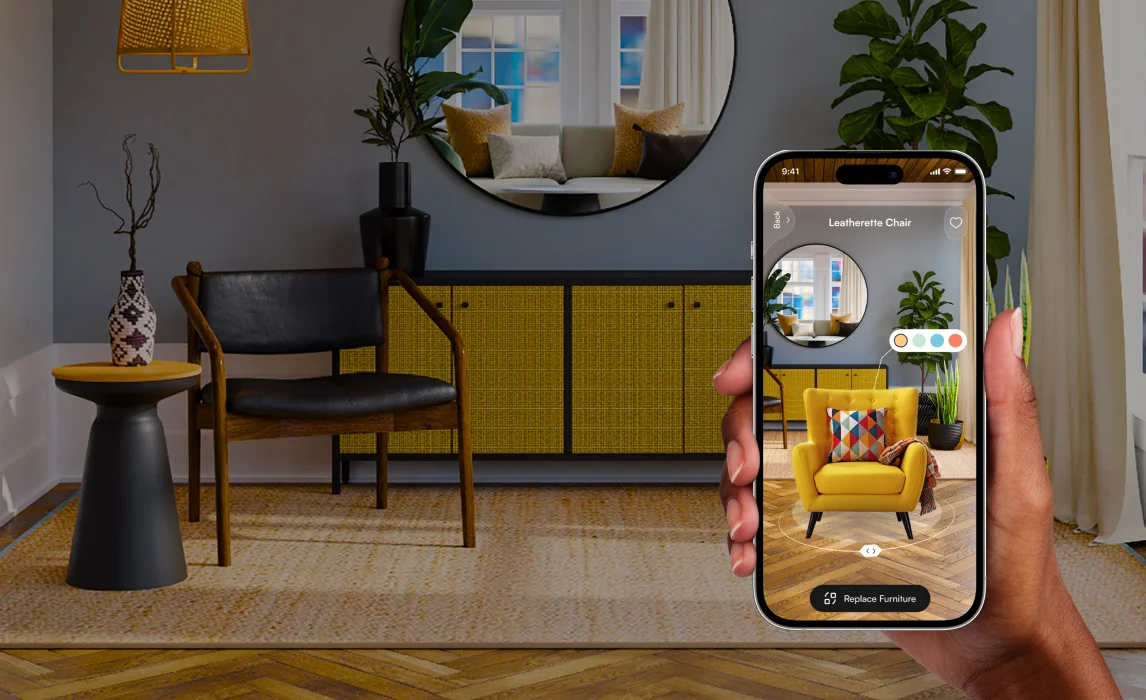How Retail Businesses Can Leverage AR in their...
Gone are the days when technology was just a talk limited to defense, automobile, and...
Augmented Reality is a technology that takes the help of smart hardware devices, like smartphones, tablets, or Smart Spectacles/AR Glasses, to get overlaid digital information about the real-world product you see through the lenses of any of the mentioned smart devices equipped with AR functionalities.
But have you wondered what technologies provide AR the power it holds?
AR technology extensively uses computer vision and machine learning algorithms for image recognition and tracking real-time user environment. This places real-world objects virtually the way users can engage with a virtual feel, like holding them as an element of the physical environment.
Potentially, AR shifts the way we interact with the world around us with the seamless integration of digital information with our physical environment.
Many experts also refer to these types as the AR application, like an AR functionality, which you may want to add to your e-commerce solution. So, let’s not test patience of your curiosity and take a jump in to know about them:
Marker-based AR type uses a camera and a black-and-white object pattern or image as a visual marker to overlay 3D digital content in the real-world environment. Here, the marker is recognized by the AR system employing computer vision algorithms.
Here, the AR application with access to the camera has to scan continuously to put focus input and let the marker recognize the image pattern for the geometry creation. But in the case of fluctuating camera focus lines, the visual object might not be seen.
As the name suggests, it’s a type of AR that uses computer vision and machine learning algorithms to identify and track real-world objects, shapes, colors, textures, and motion, at the focus of the camera without any specific visual markers.
Markerless AR analysis employs Simultaneous Localisation and Mapping (SLAM) to analyze the environment and place right-fit maps to include 3D virtual objects. The best thing about this is that the placed 3D visual objects on the map will not move even if it isn’t in the user’s view field unless you do it by yourself, along with it eliminates the need for scanning new images.
It can even detect objects and their characteristics without having prior knowledge about the same, as it combines computer graphics and real-world images to understand the environment.
But the main challenge of such AR applications is gathering and managing data and also asking for the algorithm to execute the heuristic learning process.
Simply put, Location-based AR uses the user’s physical location through GPS, camera, and other sensors to overlay digital content nearby onto the real world. It once asks for capturing the surroundings, such as landmarks, roads, etc., so that AR applications can precisely align digital content with the real-life environment.
Examples of location-based AR applications are Pokémon Go, Ingress, and Wizards Unite. And Google is also in-line to use location-based AR to build a WebAR named VPS (Visual Positioning System) – a successor of GPS (Geographical Positioning System) to improve Google Maps user experience.
Projection-based AR refers to the system that projects the synthetic light onto the flat physical surface to showcase 3D image details. It even understands human interactions with the projected augmentation using the SLAM model. You can even create holograms using this AR type to make your offline store customers have a fun and story-guiding experience.
Ring any bell? ? Exactly, just the way, robust stark works with JARVIS – AI and AR technology!
This is what projection-based AR would look like!
Overlay AR refers to an application overlaying the digital content on the mobile screen as it is a part of the real world.
This type of AR focuses on the real-world object‘s contours/borders/edges to detect and track them to overlay their digital content onto those objects. Also, it shows the image/illustration of the digital content in such a way that creates a vibe like it’s actually interacting with the physical environment.
AR architecture varies through the functionality you want it to perform. Though several architectural components are a must to consider, including User Interface (UI), AR Engine and Gadgets, Client AR Application, Core e-commerce systems (CMS, SRM, ERP, PIM, etc.), and most importantly, the Backend (Database of metadata, 3D models, and other coordinational, navigational data, etc.
At MindInventory, we will first understand your retail business operations and the legacy software solutions you use to help you create an AR-powered e-commerce platform with a total SaaS integration solution to help you enforce centralized management across the business.

Gone are the days when technology was just a talk limited to defense, automobile, and...